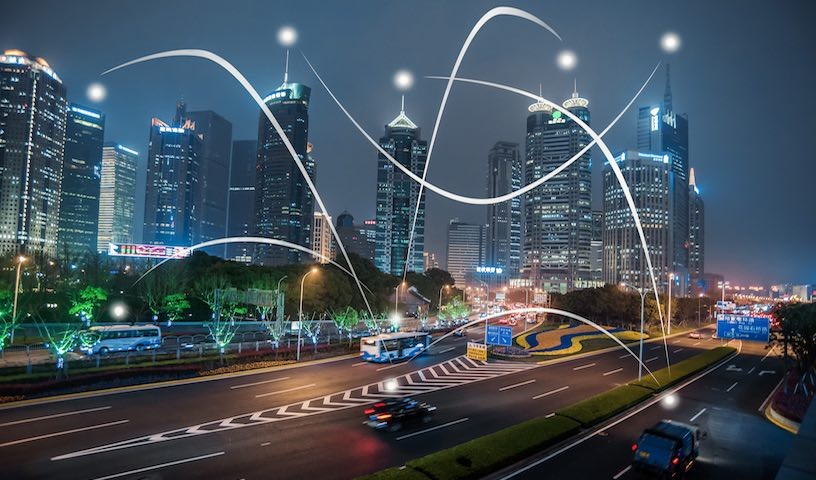5G is the next generation of mobile network technology that is believed to provide about 10 times more speed than what 4G networks are providing. In addition to offering the network speeds required for online apps and mobile-streaming, 5G is going to generate unique prospects for innovation and progress in artificial intelligence, advanced manufacturing, and remote health care.
We will need to have some patience until the complete potential of 5G unravels. However certain countries and industries can leverage its power efficiently with the help of 5G.
5G-Empowered Industries

By 2035, global sales activity will reach $13.2 trillion with the help of 5G networks. It will especially prove beneficial to five industries: manufacturing, information and communication, wholesale and retail sales, public services, and construction.
It is predicted that 5G-enabled sales of the manufacturing industry will reach $4.6 trillion. Efficiency levels will be so high that researchers expect this technology to allow for the first “smart factories” of the world. Smart factories would leverage the faster speed, automated processes will be improved, cabled connections will be eliminated and more data will be gathered.
The probability of expensive downtime will also be reduced because this data, combined with machine learning algorithms, can help companies foretell when expensive equipment is about to fail.
Currently, humans are needed to troubleshoot machines when issues arise because some processes are so complex that they can’t be effectively automated but 5G networks will enable virtual and augmented reality devices enough that they will become reliable for use in high precision work. A human worker’s productivity will increase greatly due to this and it will also allow humans and robots to work in closer harmony.
Leading The Way
It is a huge task to develop 5G networks and implement them into the many industries of the global economy. United States, China, Japan, Germany, France, United Kingdom, South Korea are the seven countries that will be responsible for 79% of all 5G-related investments.
However, the two biggest players in 5G development are the United States and China.
United States

The United States is leading in 5G investment but it is in a peculiar situation. China is moving ahead in terms of investment and is even believed to surpass the United States in 5G-enabled output and employment.
The World’s largest manufacturer of telecommunications equipment is Chinese tech giant Huawei yet, the U.S. has prominent tech hubs like Silicon Valley which is why the country is leading the world in terms of patent activity and high-tech company density.
5G can be used for various applications including autonomous vehicles and manufacturing. American tech firms have an edge here due to their innovative capability and software expertise.
China

China the world’s largest manufacturer which allows it to leverage the power of 5G networks. Compared to other countries on the list, China’s estimates are enormously larger with about 11 million 5G-enabled jobs and more than $1.3 trillion in output by 2035.
The efficient network of suppliers, manufacturers, and distributors makes China a cost-efficient place to make things. China is also leading in terms of innovation and is second in the world in terms of patent activity. Telecom giants like Huawei and ZTE Corporation are in Shenzhen – once a small fishing village in China.
Despite all of this, China faces severe difficulties regarding supplying 5G equipment worldwide. Huawei is assumed to be involved in strategies and methods that are not good for fair and healthy competition.
Although these controversies damaged but failed to stop China’s tech growth. The country has the largest 5G consumer network is the world and claims that it has started research on 6G, which will eventually succeed 5G.
Its High-Potential Markets:
Health care.
Diagnosis of patients can be done remotely with the help of 5G. Not only that, but surgeries and other practical procedures can be done using digital avatars.
Environment.
Data on weather conditions, plant health, crop health, moisture, mineral and chemical levels, pest presence and more will be transformed using connected devices that affect labor allocation, cost management, waste reduction, and yield.
Smart Buildings.
5G will aid in combining data from multiple structures and systems which will allow automated control to every building system including HVAC, lighting, fire, security, energy and water use.
Manufacturing.
Tremendously promising areas of 5G application are industry 4.0 and end-to-end automation using IIoT
Smart Cities.
Data on everything regarding air quality, energy use, and traffic patterns will be collected and monitored using IoT sensors. Artificial intelligence will be used with the help of 5G to analyze the large amounts of data to automate processes that are done manually at present.
Transportation.
5G will make the initiative of self-driving vehicles a reality. It will be embedded in all of them so that they can communicate with other nearby vehicles in real-time.
The Waiting Game:

It will take time to completely understand the benefits of 5G. Its full potential can be understood using innovations and complementary technologies. Time will tell which industries and countries benefit the most from it.
The experience for certain business to consumer (B2C) applications will be enriched using 5G but its biggest beneficiary will be the commercial world. New insights, efficiencies, innovations and IIoT uses which are unavailable with 4G will be enabled with 5G. 5G is going to impact every human activity. Our understanding of connectivity for the home, the enterprise and how we do business will be completely changed with the use of 5G.
Zahoor Bhat has over 10+ years of experience as an online editor and media manager. He has worked with major online news and content sites as a media manager. He is well versed with major content management systems and web platforms such as WordPress and social media networks including Facebook, Twitter, Youtube, Google Business, Yelp, Instagram & Linkedin. He is an expert in content creation, proofreading and finally making it live. Being a social media expert, he is able to make relations with social media influencers and make sure to generate leads and grow business via different social media platforms.




